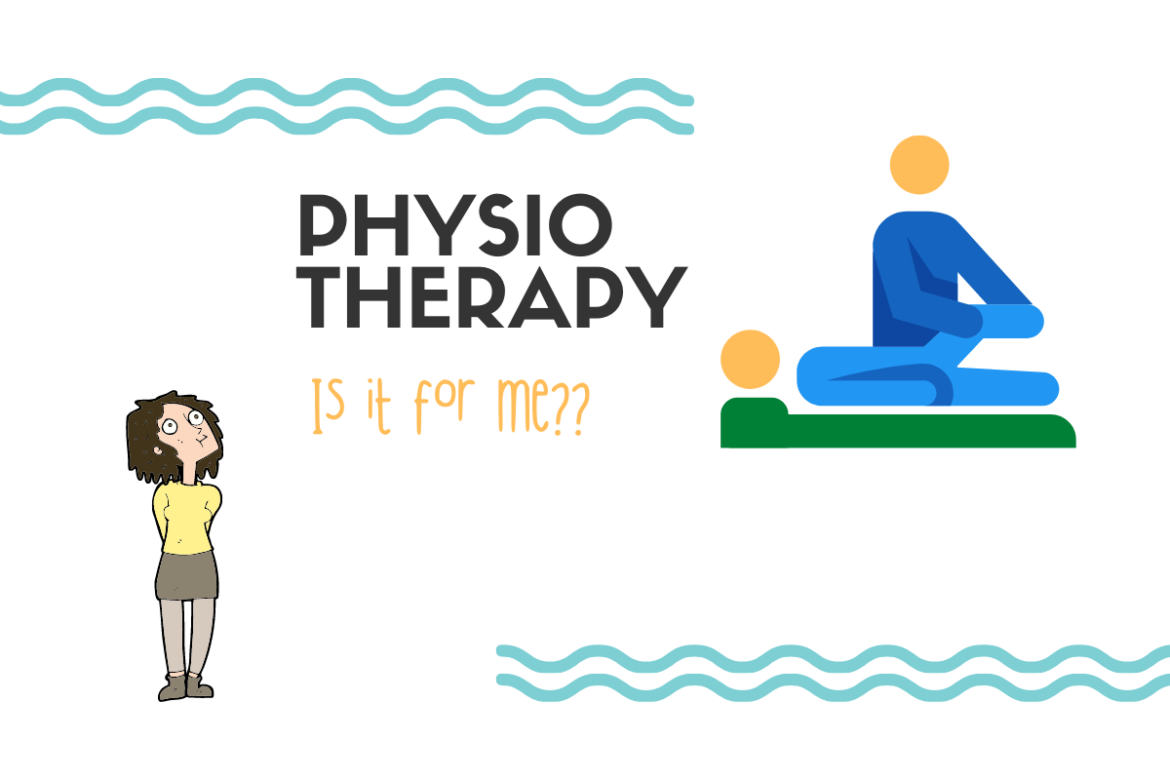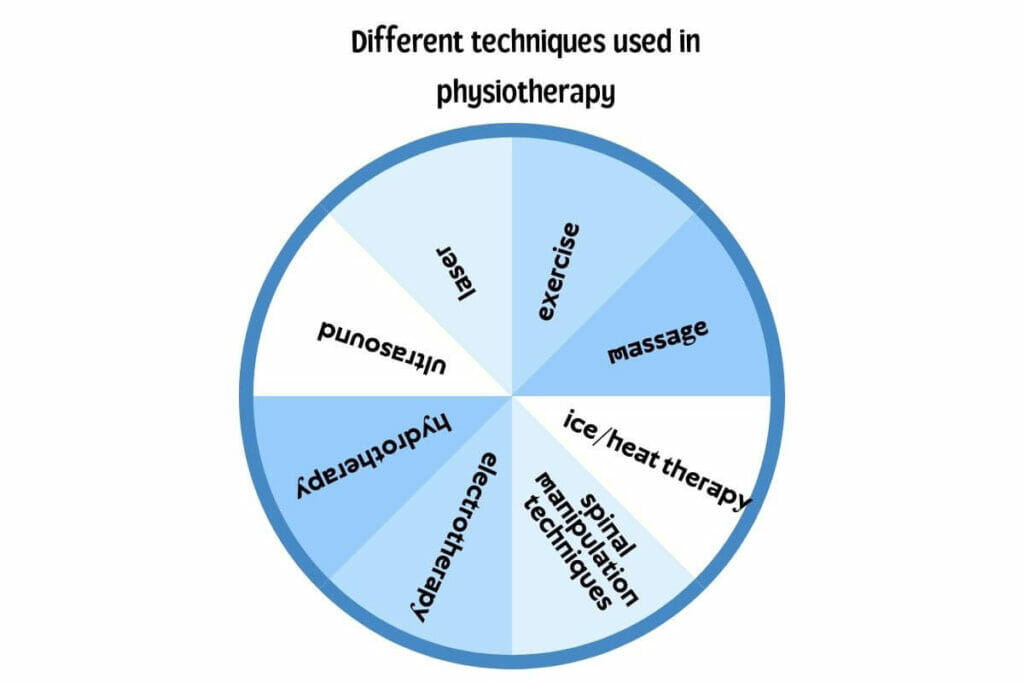While most people often think physiotherapy treatment is helpful in improving mobility or treating low back pain, on the contrary, physiotherapists can assess, diagnose and treat more than mobility-related issues. From pain management to stroke rehabilitation, uses of physiotherapy are wide and plenty. If you are keen to know what physiotherapy is, how it works, the conditions it can treat, the types of physiotherapy, and the possible areas of application, read on.
Physiotherapy is a branch of medicine that uses an evidence-based approach to treat acute or chronic pain and mobility issues that could result from trauma, injury or any illness. Physiotherapy is provided as a primary treatment method or in conjunction with other medical services.
According to WHO,
“Physiotherapists assess, plan and implement rehabilitative programs that improve or restore human motor functions, maximize movement ability, relieve pain syndromes, and treat or prevent physical challenges associated with injuries, diseases and other impairments. They apply a broad range of physical therapies and techniques such as movement, ultrasound, heating, laser and other techniques. They may develop and implement programmes for screening and prevention of common physical ailments and disorders”.
Here is a quick story that you might like to watch: Surprising Facts On Physiotherapy
Conditions Physiotherapy Can Treat-
The following are a few conditions that physiotherapy can help manage or provide a cure.
- Neuromusculoskeletal issues such as back pain, sports injuries and osteoarthritis
- Impaired mobility as a result of neurological problems such as stroke, spinal cord injuries, Alzheimer’s, Parkinson’s and multiple sclerosis
- Rehabilitation care related to cardiovascular ailments
- Respiratory conditions such as asthma, cystic fibrosis and chronic obstructive pulmonary disease
- Strengthen pelvic floor muscles to improve bladder control
- Recover mobility and other physical functions in case of injuries including sports injuries
- Vertigo and dizziness
Thus, you can recover from a wide range of health issues with the help of a physiotherapist.
Types Of Physiotherapy
Based on the above areas of application, physiotherapy can be broadly classified into the following types.
1. Orthopaedic physiotherapy
It is one of the most prominent areas of physiotherapy, wherein a physical therapist will help diagnose and treat musculoskeletal disorders. For example, with this physiotherapy treatment, you can effectively gain relief from back pain, neck pain, muscle sprain or strain and even fractures.
2. Sports physiotherapy
Sports is another area where physiotherapy is extensively used. Physiotherapists assist sportspersons in lowering the risk of injury, recovering from training and improving overall sports performance.
3. Geriatric physiotherapy
Geriatric physiotherapy is the type of treatment that focuses on helping those with disorders such as arthritis pain, low back pain, incontinence, and mobility problems commonplace with older adults. Physiotherapists can also help with balance issues, thereby aiding in fall prevention and its associated complications.
4. Pediatric physiotherapy
As the term implies, therapists of this speciality are involved in diagnosing, treating, and managing various conditions in infants, young children, and teens. The treatment could improve motor skills, cognitive functions and coordination in pediatric patients with congenital or developmental issues.
Also Read: Quiz On Childhood Illnesses: Test Yourself!
What Is The Procedure?
Physiotherapists might employ any or combination of the following techniques to achieve the desired outcome.
- Exercises
- Massage
- Ice/heat therapy
- Spinal manipulation techniques
- Laser and ultrasound
- Hydrotherapy and electrotherapy
The choice of techniques employed will depend on the condition being treated, and the physiotherapists take a holistic approach and tailor solutions to suit the individual needs to the patients.
How Exactly Does Physiotherapy Work?
Following are a few case examples that can help you understand how physiotherapy can help you in specific conditions:
Musculoskeletal (Back pain)
Let us take the case of a common musculoskeletal complaint, the back pain. When you approach a physiotherapist for this issue, the therapist advises you on several things such as: correcting your posture, how to lift and carry stuff without straining your back, etc., so that you can manage your daily activities without pain or injury and avoid further complications such as surgery.
Yes, with the help of physiotherapy, you will be able to avoid taking medications or resorting to surgery for such musculoskeletal problems.
Neurology (Physical impairment after a stroke)
Now, consider the case of neurological conditions such as stroke. A stroke can result in a loss of range of motion and physiotherapy works by stimulating the nervous system through various activities. The activities target aspects such as improving movement, strength, balance and coordination so that the stroke patients can recover from the impact and gain independence related to their daily activities over time.
Respiratory (Asthma)
And in the case of cardiopulmonary complaints such as asthma, physiotherapists would work towards improved breathing through retraining. They might also focus on secretion removal using suitable equipment and techniques to clear the airways.
Cardiac rehabilitation
Cardiac rehab is an outpatient procedure aimed to improve heart health after a heart attack, other heart diseases, or a surgery to treat heart disease. Physiotherapy plays a vital role in cardiac rehabilitation. Through exercises, education and support, physiotherapists help shorten the hospital stay, reduce the risk of complications and improve the overall quality of life.
Weakened pelvic floor (Urinary incontinence)
Weakened pelvic floor muscles can cause loss of bladder control leading to urinary incontinence and in some women may cause sexual difficulties due to reduced vaginal sensation. Various reasons such as childbirth, constipation, surgery, obesity, or menopause can weaken pelvic floor muscles, and your therapist can help strengthen the muscles with specific exercises.
When To See A Physiotherapist?
Thus, physiotherapy can be helpful in a wide variety of situations. So, you can consider consulting a physiotherapist in the following scenarios related to prevention, management and rehab.
- Injury prevention
- Improve balance
- Posture correction
- Pain relief in general
- Improve flexibility
- Manage chronic diseases
- Recover from a surgery
- Postpartum body conditioning
What To Expect During A Physiotherapy Appointment?
As the first step, your physiotherapist would assess your condition by carrying out simple tests and formulate a treatment plan. Accordingly, you will be attending further sessions to avail treatment.
You will also be most likely educated on carrying out exercises at home to maintain the continuity of the treatment plan and ensure its efficacy as applicable.
Note:
You might experience soreness/pain after the physiotherapy sessions due to the exercise and other treatment procedures carried out, it is normal. If you find the soreness hard to manage, talk to your physiotherapist.
The Final Word
Physiotherapy is of several types that can be very effective in pain management, restore motor functions, and treat physical impairments caused due to injuries, trauma, or other illnesses. Based on the diagnosis and prognosis, physiotherapy can either be the primary treatment or provided along with other treatment procedures. If suggested, you can very well depend on it, because the treatment has a pretty high success rate in treating and managing conditions!
Still have unanswered questions on physiotherapy? Here are some physiotherapy FAQs answered.
Images from canva.com


